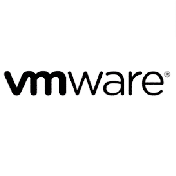Seminarinhalt
By the end of the course, you should be able to meet the following objectives:
- Describe vSAN host operations
- Discuss vSAN networking requirements
- Define the tasks involved in hardware replacement in a vSAN cluster
- Perform vSAN cluster scale-out and scale-up operations
- Describe common vSAN maintenance operations
- Define the tasks required for updating and upgrading vSAN
- Describe vSAN security operations
- Configure a key management server (KMS) cluster
- Configure vSAN storage policies and observe the effects of a cluster-wide change
- Explain vSAN resilience and availability features
- Perform ongoing vSAN management tasks
- Use the vSAN health service to monitor health and performance
Product Alignment
• ESXi 6.7
• vCenter Server 6.7
• vSAN 6.7
Hinweis: Bei kurzfristigen Buchungen, 1 Woche vor Seminarbeginn, können wir Ihren Seminarplatz leider nicht garantieren. Es kann daher zur Verzögerung bei Ihrer Anmeldebestätigung kommen.
Programm
- Introductions and course logistics
- Course objectives
vSAN Host and Hardware Operations
- Recognize the importance of hardware compatibility
- Ensure the compatibility of driver and firmware versioning
- Use tools to automate driver validation and installation
- Apply host hardware settings for optimum performance
- Recognize the benefits of using VMware vSphere® Distributed Switch™
- Compare the benefits of NIC teaming and Link Aggregation Control Protocol (LACP)
- Plan appropriately for networking configuration changes
- Identify ESXCLI commands and namespace options
- Recognize how to use ESXCLI commands for troubleshooting vSAN software and hardware issues
- Use Ruby vSphere Console (RVC) to get detailed information about the vSAN environment
vSAN Data Availability Operations
- Describe vSAN storage policies
- Recognize the impact of a vSAN storage policy change
- Describe and configure the Object Repair Timer advanced option
- Plan disk replacement in a vSAN cluster
- Plan maintenance tasks to avoid vSAN object failures
- Recognize the importance of backing up data in vSAN
- Describe the VMware vSphere® Storage APIs - Data Protection framework
- Recognize the importance of managing snapshot utilization in a vSAN cluster
vSAN Cluster Maintenance
- Perform typical vSAN maintenance operations
- Describe vSAN maintenance modes and data evacuation options
- Assess the impact on cluster objects of entering maintenance mode
- Determine the specific data actions required after exiting maintenance mode
- Define the steps to shut down and reboot hosts and vSAN clusters
- Migrate vSAN to a new vCenter Server instance
- Use best practices for boot devices
- Upgrade and update vSAN
- Replace vSAN hardware by using scale-in and scale-out strategies
vSAN Security Operations
- Identify differences between VM encryption and vSAN encryption
- ecognize how to perform ongoing operations to maintain data security
- Identify steps in adding an existing encrypted vSAN cluster to a new vCenter Server instance
vSAN Monitoring and Performance
- Describe how the Customer Experience Improvement Program (CEIP) enables VMware to improve products and services
- Identify the vSAN tools and health checks available for monitoring vSAN health
- Manage alerts, alarms, and notifications related to vSAN in vSphere Client
- Create and configure custom alarms to trigger vSAN health issues
- Describe the vSAN tools and services that monitor vSAN performance
- Use performance views to access metrics for monitoring vSAN clusters, hosts, and virtual machines
- Explain how the writing of data generates I/O traffic and affects vSAN performance
- Use performance metrics to analyze the vSAN environment
Zielgruppen
- Storage and virtual infrastructure administrators who are responsible for production support and administration of vSAN v6.x
Vorkenntnisse
- Understanding of concepts presented in the VMware vSphere: Install, Configure, Manage [V6.x] course
- Storage administration experience with block or file storage devices
- Completion of the VMware vSAN: Deploy and Manage [v6.7] course or equivalent experience with vSAN is desirable.
The course presumes that a student can perform the following tasks with no assistance or guidance before enrolling:
- Use VMware vSphere® Web Client
- Create and manage VMware vCenter Server® objects, such as data centers, clusters, hosts, and virtual machines
- Create and modify a standard switch
- Connect a VMware ESXi™ host to NAS, iSCSI, or Fibre Channel storage
- Create a VMware vSphere® VMFS datastore
- Use a wizard or a template to create a virtual machine
- Migrate a virtual machine with VMware vSphere® vMotion®
- Migrate a virtual machine with VMware vSphere® Storage vMotion®
If you cannot complete all of these tasks, VMware recommends that you complete this courses before enrolling in VMware vSAN: Production Operations:
- VMware vSphere: Install, Configure, Manage [V6.7] and
- VMware vSAN: Deploy and Manage [V6.7]



